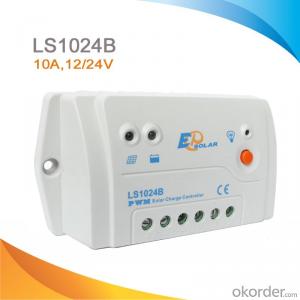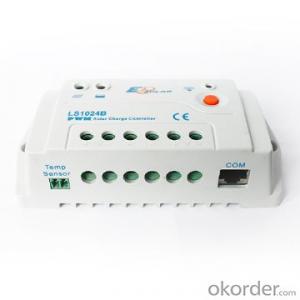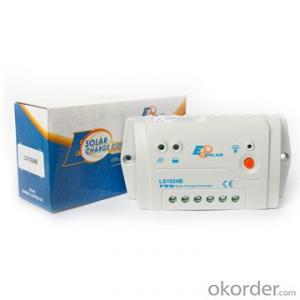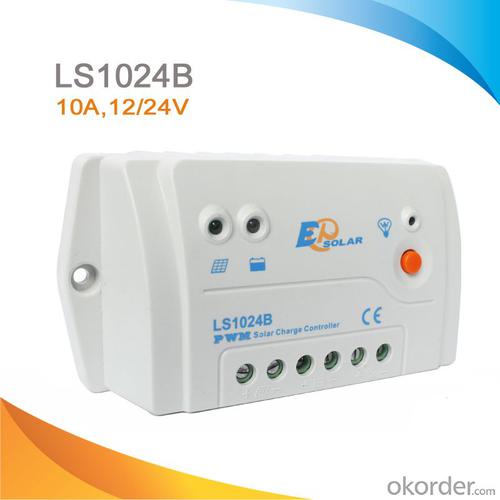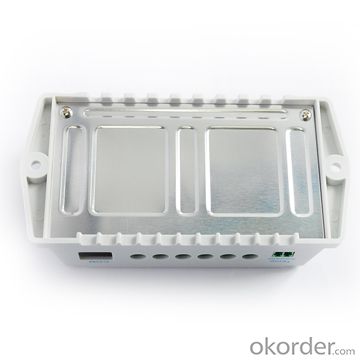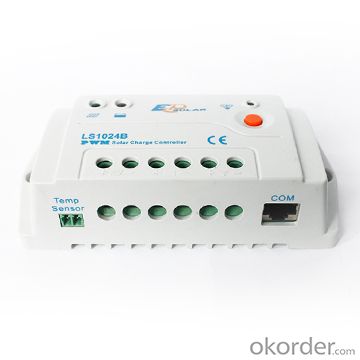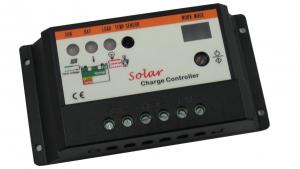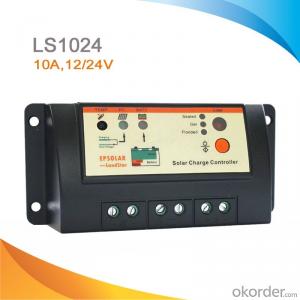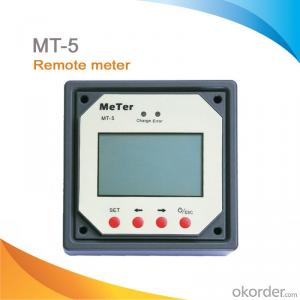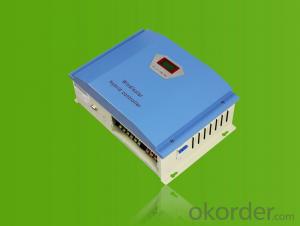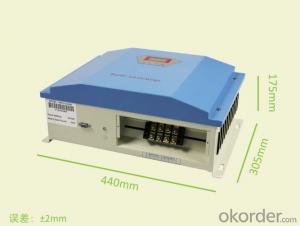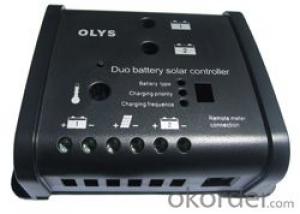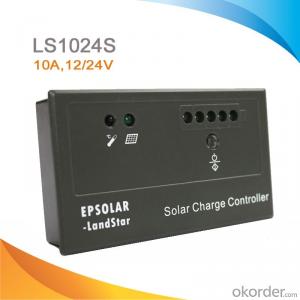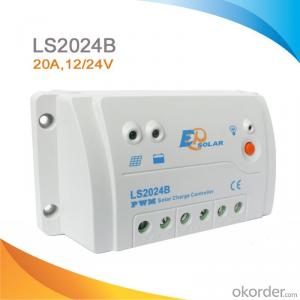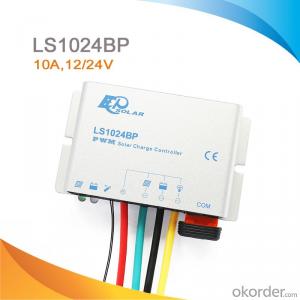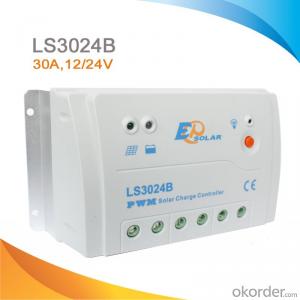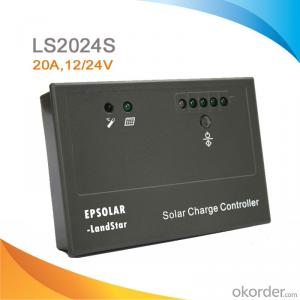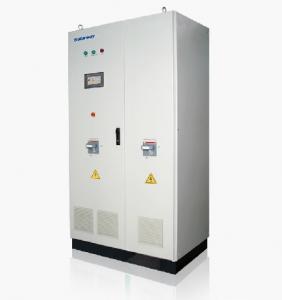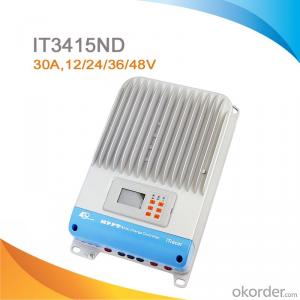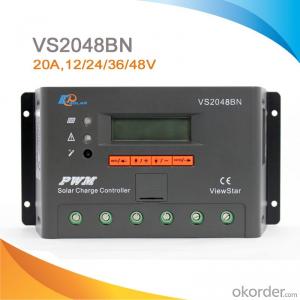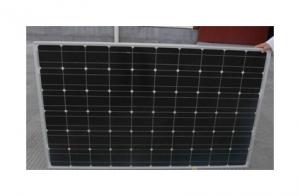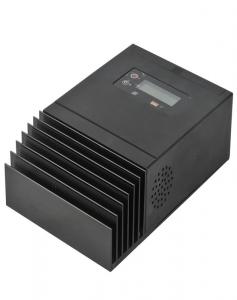PWM Solar Panel Charge Controller, 10A 12/24V, LS1024B - Solar Light Controllers
- Loading Port:
- Tianjin
- Payment Terms:
- TT or LC
- Min Order Qty:
- 100 pc
- Supply Capability:
- 10000 pc/month
OKorder Service Pledge
OKorder Financial Service
You Might Also Like
PWM Solar Panel Charge Controller (10A 12/24V, LS1024B)
Product Description:
Three system voltage configuration : 12V, 24V or 12V/24V auto work
High efficiency PWM charging with temperature compensation
3 LEDs shows PV charging, battery and load status
External temperature sensor interface
RS-485 bus communication
Open standard Modbus communication protocol
Software update function
Powerful function via MT50 or PC
Diversified load control modes : Manual, Light ON/OFF, Light ON+ Timer, Time Control
Battery type selection: Gel, sealed, flooded and User type
Real-time monitor
Programmable parameters
LVD or SOC load disconnect function
Energy statistics function
Main Product Features:
PV short circuit
PV reverse polarity
Battery overcharge
Battery over discharge
Battery reverse polarity
Load short circuit
Load overload
Overheating
Specifications of PWM Solar Panel Charge Controller,10A 12/24V,LS1024B:
Minimum Order Quantity: | pc | Unit: | pc | Loading Port: | Tianjin |
Supply Ability: | 10000 pc/month | Payment Terms: | TT or LC | Package: | Paper Packaging |
Electrical parameters | LS1024B | LS2024B | LS3024B | ||
Nominal System Voltage | 12 / 24V auto work | ||||
Rated Battery Current | 10A | 20A | 30A | ||
Maximum battery voltage | 50V | ||||
Grounding | Common positive | ||||
Self-consumption | 8.4mA(12V),7.8mA(24V) | ||||
Temp. compensation | -3mV/℃/2V(25℃ ref) | ||||
Equalize charging voltage | Sealed: 14.6V, Flooded: 14.8V, User-defined: 9~17V | ||||
Boost charging voltage | Gel: 14.2V, Sealed: 14.4V, Flooded: 14.6V, User-defined: 9~17V | ||||
Float charging voltage | Gel /Sealed /Flooded: 13.8V, User-defined: 9~17V | ||||
Low voltage reconnect voltage | Gel /Sealed /Flooded: 12.6V, User-defined: 9~17V | ||||
Low voltage disconnect voltage | Gel /Sealed /Flooded: 11.1V, User-defined: 9~17V | ||||
Working temp. | -35℃~+55℃ | ||||
Humidity | ≤95% (NC) | ||||
Enclosure | IP30 | ||||
Dimension | 138.6x69.3x37mm | 159.6x81.4x47.8mm | 200.6x101.3x57mm | ||
Terminal | 4mm2 | 10mm2 | 10mm2 | ||
Net weight | 0.13kg | 0.3kg | 0.5kg | ||
Images of PWM Solar Panel Charge Controller,10A 12/24V,LS1024B:
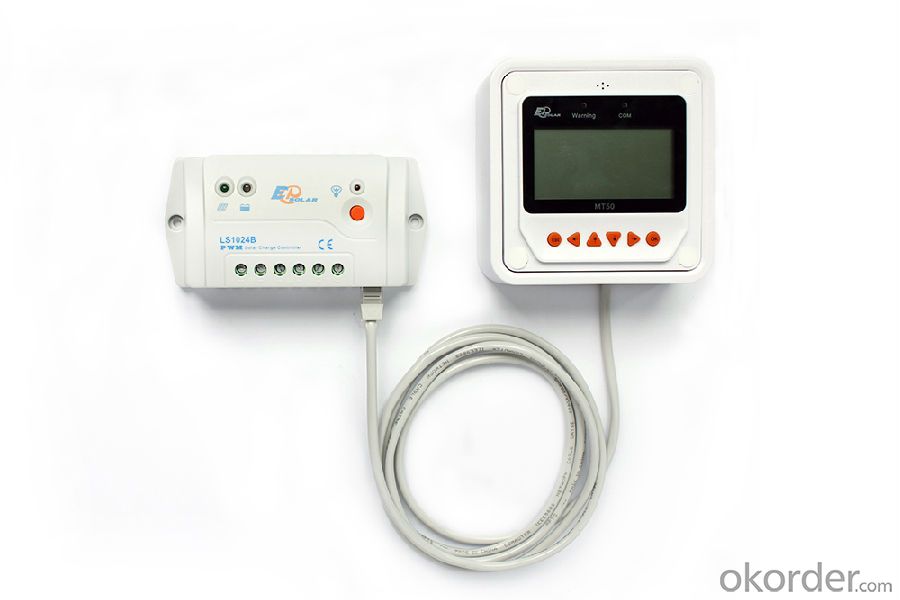
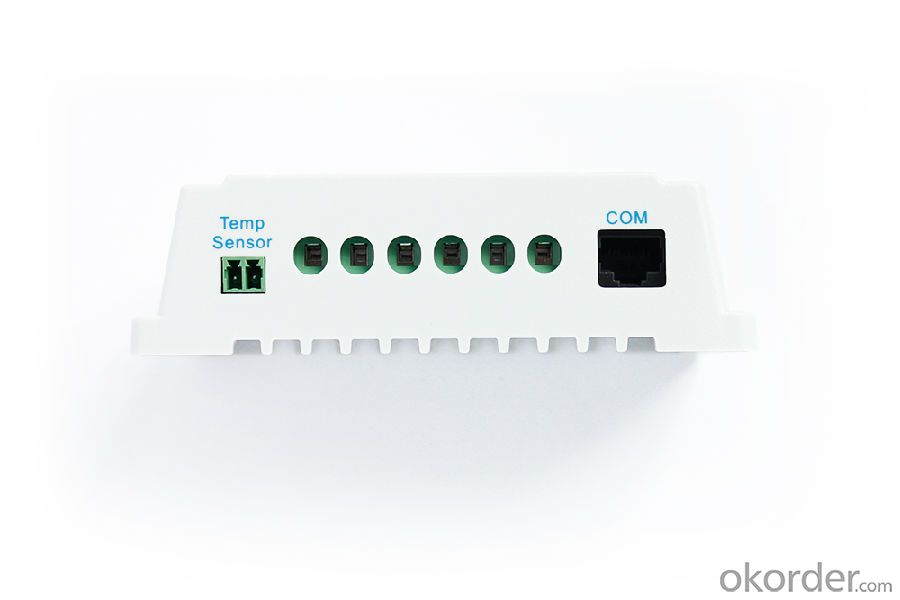
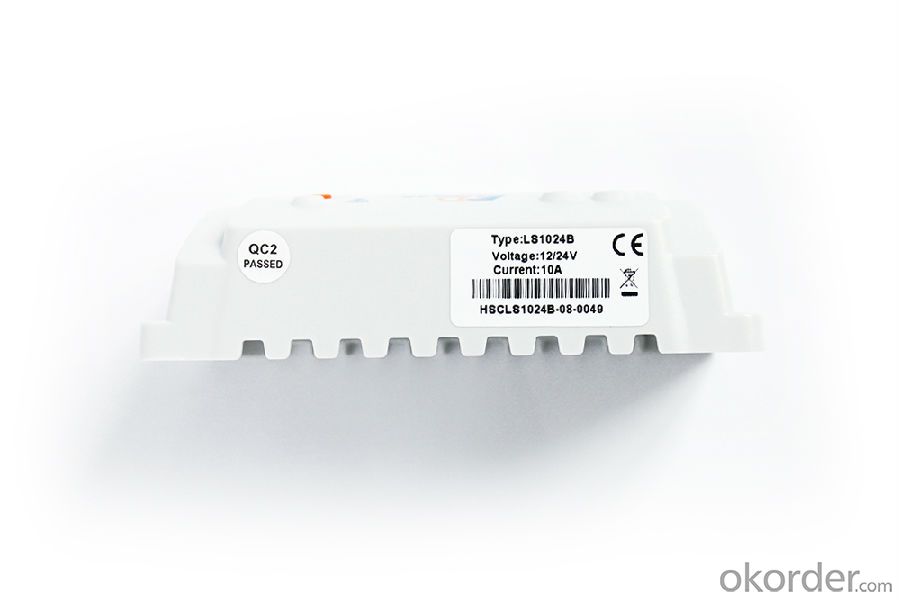
FAQ:
Q1. What is the voltage?
A1. Our 45/60A solar charge controller is 12/24/36/48V auto work.
Q2. What is the difference between MPPT&PWM?
A2. MPPT has higher efficiency; it can track the max power point and won't waste energy.
Q3. What is the efficiency of the MPPT controllers?
A3. MPPT > 99%, peak conversion efficiency > 98%.
Q4. What is the warranty of the product?
A4. 12 months
Q5. What protection does your MPPT controller have?
A5. PV array short circuit, PV reverse polarity, Battery reverse polarity, Over charging, Output short circuit.
- Q: Can a solar controller be used in a solar-powered research station in Antarctica?
- Yes, a solar controller can be used in a solar-powered research station in Antarctica. A solar controller is essential for regulating and optimizing the charging and discharging of batteries connected to the solar panels in the extreme weather conditions of Antarctica. It helps to protect the batteries from overcharging, over-discharging, and other potential damages, ensuring efficient and reliable power generation for the research station.
- Q: How does a solar controller handle overvoltage protection?
- A solar controller handles overvoltage protection by continuously monitoring the voltage level of the solar panel array. If the voltage exceeds a predetermined threshold, the controller activates a protection mechanism, such as diverting the excess energy to a dump load or disconnecting the panels from the system altogether. This safeguards the system from potential damage caused by overvoltage conditions.
- Q: Solar controller is called solar charge and discharge controller, is used in solar power system, the control of multi-channel solar cell array on the battery charging and battery to the solar inverter load power supply automatic control equipment
- Solar controller is the power (including battery and electricity), solar panels, the load of the center connector, why say so? Because the above components must be connected with the solar controller in order to be able to achieve the work, in general, the controller's main function is to control the solar panels on the battery charge or disconnect, control the load power supply or disconnect, control the city Electricity and battery switching between the main is that these features, and other, such as light control to open, light control off, timing delay off, manual switch, and debugging and other functions.
- Q: What is the maximum discharge voltage for a solar controller?
- The maximum discharge voltage for a solar controller typically depends on its design and specifications. However, it is generally recommended to keep the discharge voltage between 11.5 and 12.5 volts to prevent over-discharge and potential damage to the battery.
- Q: Can a solar controller be used with a solar-powered residential building?
- Yes, a solar controller can be used with a solar-powered residential building. A solar controller helps regulate and optimize the charging and discharging of the batteries in the solar system, ensuring efficient and safe operation. It also helps monitor and control the flow of electricity from the solar panels to the building's electrical system.
- Q: Can a solar controller be used in a solar-powered electric go-kart system?
- Yes, a solar controller can be used in a solar-powered electric go-kart system. A solar controller is responsible for regulating the flow of electricity from the solar panels to the batteries, ensuring that the batteries are charged efficiently and preventing overcharging. In a solar-powered electric go-kart system, the solar controller would play a crucial role in managing the charging process and optimizing the use of solar energy to power the go-kart.
- Q: Can a solar controller be used with solar panels that are connected in series?
- Yes, a solar controller can be used with solar panels that are connected in series. In fact, a solar controller is often recommended when using solar panels connected in series to regulate the voltage and prevent overcharging of the batteries. The solar controller acts as a middleman between the panels and the batteries, ensuring that the batteries receive the optimal charge and preventing any damage that may occur due to excessive voltage. By monitoring the voltage and current from the solar panels, the solar controller can adjust the charging parameters to maximize the efficiency and lifespan of the batteries. Therefore, using a solar controller is highly recommended when using solar panels connected in series to ensure the proper functioning and longevity of the entire solar power system.
- Q: What is the maximum power rating of a solar controller?
- The maximum power rating of a solar controller depends on the specific model, but it typically ranges from 10 to 60 amps.
- Q: How do you install a solar controller?
- To install a solar controller, start by determining the appropriate location near the solar panels where it will receive sufficient sunlight. Next, connect the solar panel's positive and negative leads to the controller's corresponding terminals. Then, connect the controller's battery terminals to the battery bank, ensuring correct polarity. Finally, connect any load or device to the controller's load terminals. Make sure to follow the manufacturer's instructions and safety guidelines throughout the installation process.
- Q: What is the maximum charging capacity a solar controller can handle?
- The maximum charging capacity that a solar controller can handle varies depending on the specific model and brand. However, most solar controllers are designed to handle charging capacities ranging from 10 to 60 amps. It is important to check the specifications of the particular solar controller in question to determine its maximum charging capacity.
Send your message to us
PWM Solar Panel Charge Controller, 10A 12/24V, LS1024B - Solar Light Controllers
- Loading Port:
- Tianjin
- Payment Terms:
- TT or LC
- Min Order Qty:
- 100 pc
- Supply Capability:
- 10000 pc/month
OKorder Service Pledge
OKorder Financial Service
Similar products
Hot products
Hot Searches
Related keywords
